- Feb 17, 2022
Deadly Trout Spoons You Didn’t Think Were for Trout
Some of the absolute best offerings for enticing strikes from trout seldom get seen by stream fish. Learn how to get an upper hand on other anglers.
Spoons work well for catching stream trout. That’s no secret. Not all spoons are created equal, though, and the best trout spoons I have found for catching trout have never been seen by most stream fish.
“Why is that?” you might wonder. The answer is simple. The Lindy Quiver Spoon and Rattl’n Quiver Spoon were designed for ice fishing, so few anglers associate either with casting to stream trout, and you’re unlikely to find them sold as trout spoons or even available on store pegs outside the Ice Belt.
Both are lightweight spoons, designed to flutter slowly as they fall to entice fussy fish into striking when fished vertically though the ice. However, that same slow fall and flutter help set apart these baits from other trout spoons. Let’s take a closer look!
About the Quiver Spoon
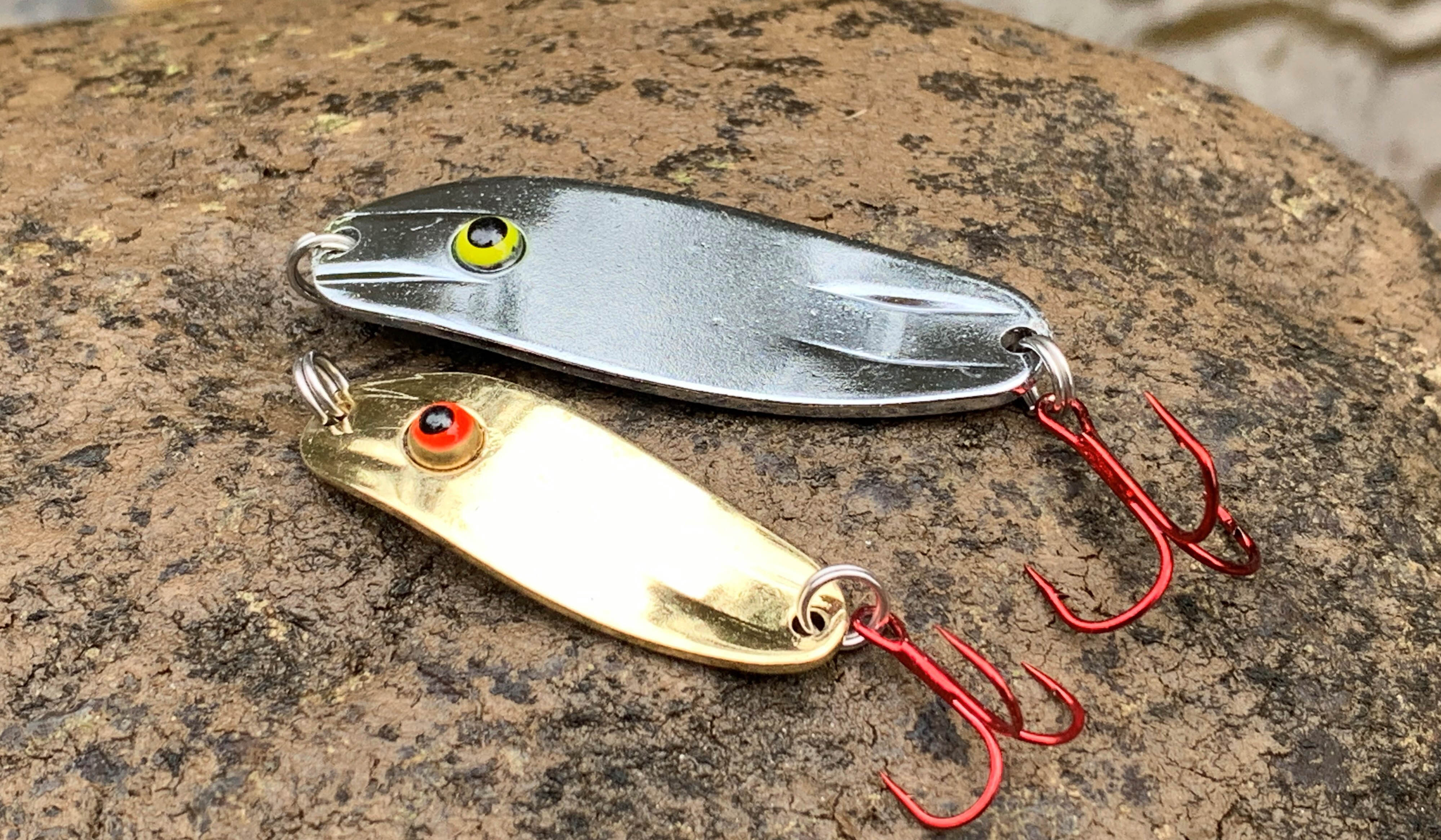

The Lindy Quiver Spoon came out a few years ago and is highly popular for ice fishing, especially for walleyes and panfish. The Rattl’n Quiver Spoon was introduced this winter and differs from the original in the fact that it has protruded eyes, which create a rattle chamber. Both spoons are flat and with a narrow profile and slight wave in the shaping that aids the wobble. Both are made of lightweight brass to allow for a gradual fall through the water.
Both versions of the Quiver Spoon come in three sizes – 1/4, 1/8, and 1/16 ounce, which measure 1 8/10 inches, 1 1/2 inches and 1 inch, respectively. All colors have plated metallic backsides for added flash. Front colors include metallic finishes, baitfish imitations and glow colors.
The Quiver Spoon shimmies with intermingled erratic rolls when reeled, creating vibration and sending out a lot of flash. When pauses or slowed, it sinks slowly and flutters. Either action engages the rattle in the Rattl’n Quiver Spoon, helping fish find this trout spoon when the water is high or a little off color or when they are holding in ambush positions that limit their view.
Quiver Spoon Selection
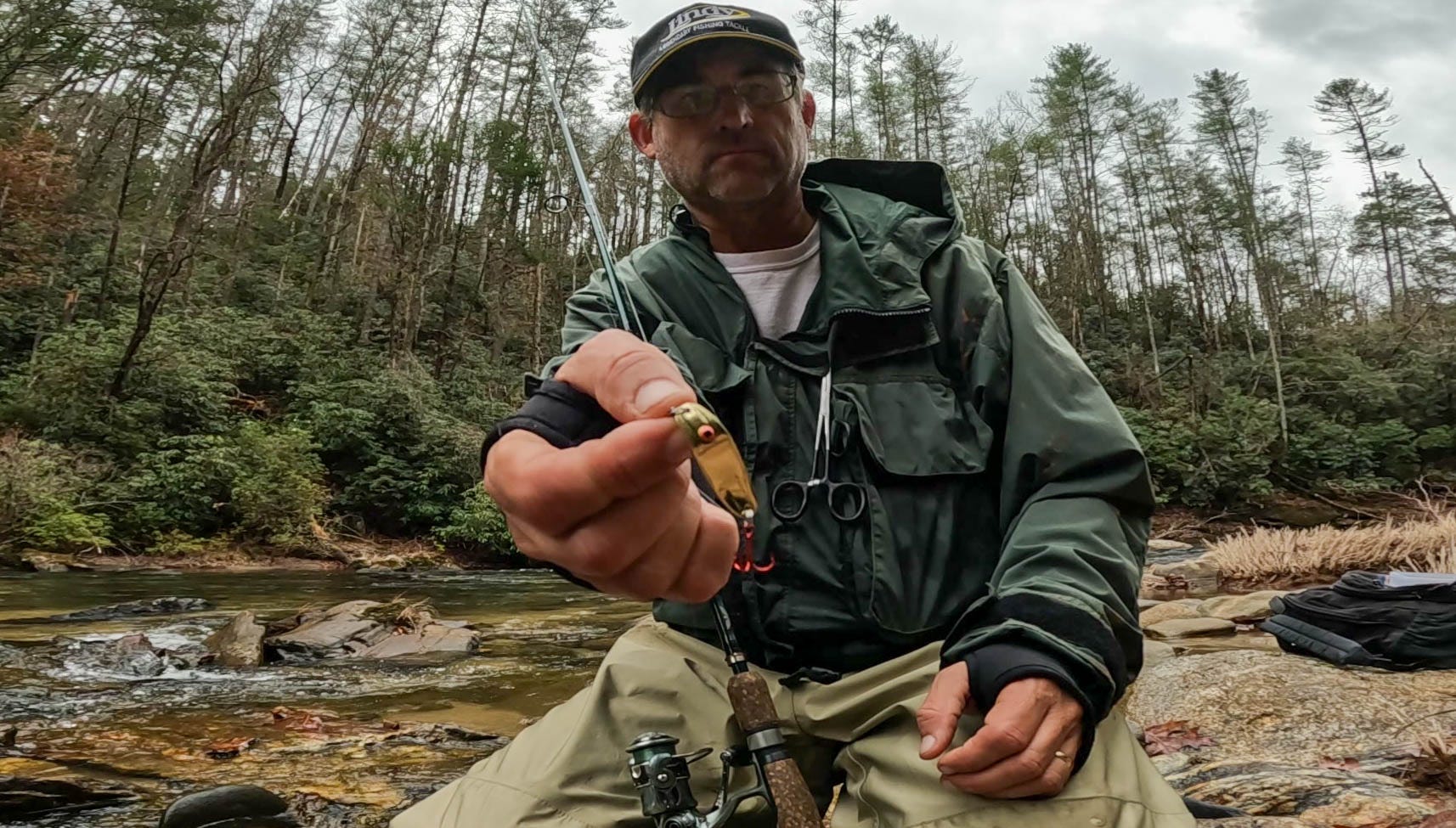

All three sizes have stream fishing merit. The 1/8-ounce model is perfect for normal conditions in the Appalachian streams that I most commonly fish and is the one I tie on the most.
The 1/16-ounce model provides a finesse option when the water is low and extra clear and fish are fussy and is a great choice for fishing small mountain streams.
The largest one allows for longer casts and sends out extra vibration and flash and is my choice for tailwaters and other large trout streams and for high water levels, which also tend to add color.
In terms of the original Quiver Spoon vs. the Rattl’n Quiver Spoon, I’ll generally start with the rattling version. My observation has always been that trout respond well to rattling lures. I think it alerts them that something is coming and makes them ready to ambush when it passes nearby.
At times sound will be a deterrent, though, and the sneakiness of a silent spoon makes it a better choice. I always watch the water behind my lure for as much of a presentation as possible because trout commonly follow lures, and I want to see how they respond to attempts to trigger strikes. If fish are following my Rattl’n Quiver Spoon but won’t quite commit, I’ll switch to a silent version before making a wholesale lure change.
Trout Spoon Presentations
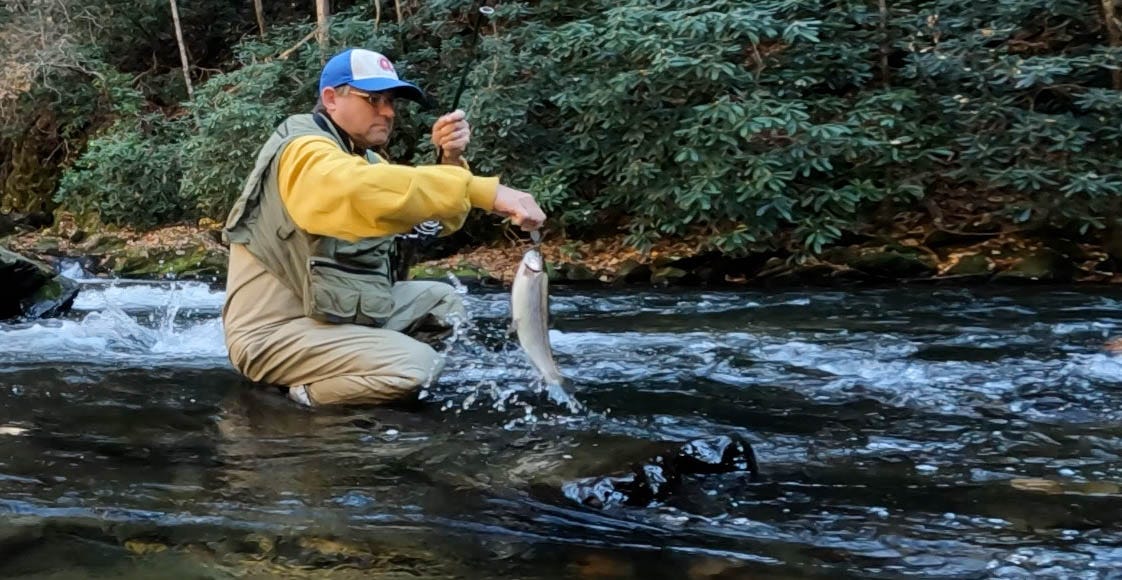

The slow fluttering fall and flash that go with it are critical parts of a Quiver Spoon’s appeal, so my presentations virtually always include lifts and drops. The spoon’s place the water column, the overall pace and the sharpness of the lifts all vary, but the practice of making the spoon rise and fall as it travels through a run remains pretty constant.
My go-to approach is to cast upstream or angle a cast upstream and let my trout spoon tumble in the current as I take up slack until the bait bumps bottom. I then work it by lifting the rod tip with a foot or two and then lowering the rod as the spoon drops, watching the line for any unusual movements as the spoon drops. Sometimes I’ll repeatedly bump bottom. If the bottom is snaggy, I’ll seek to keep the bait just off the bottom.
For swifter shallower runs or more aggressive fish, I’ll reel faster and move the lure more with the reel than the rod. Lifts and drops remain important, though, and I’ll add those by snapping the rod forward to make the spoon rise and pausing briefly so it can fall again.
Slow lazy pools call for more active working of the spoon. As much as a stream run allows, though, I try to let the current aid in the natural presentation of the spoon and seek to work it close to current seams and cover, such as boulders and brush, and to eddies along the bank.
Trout are among the moodiest of all sport fish, and their preferences can change from day to day in terms of feeding areas and preferred presentations, even without an obvious change in conditions. Therefore, it’s critical to experiment with locations, presentations, and levels of the water column where your work your spoon and to pay careful attention to how the trout respond.
Special Regs Waters
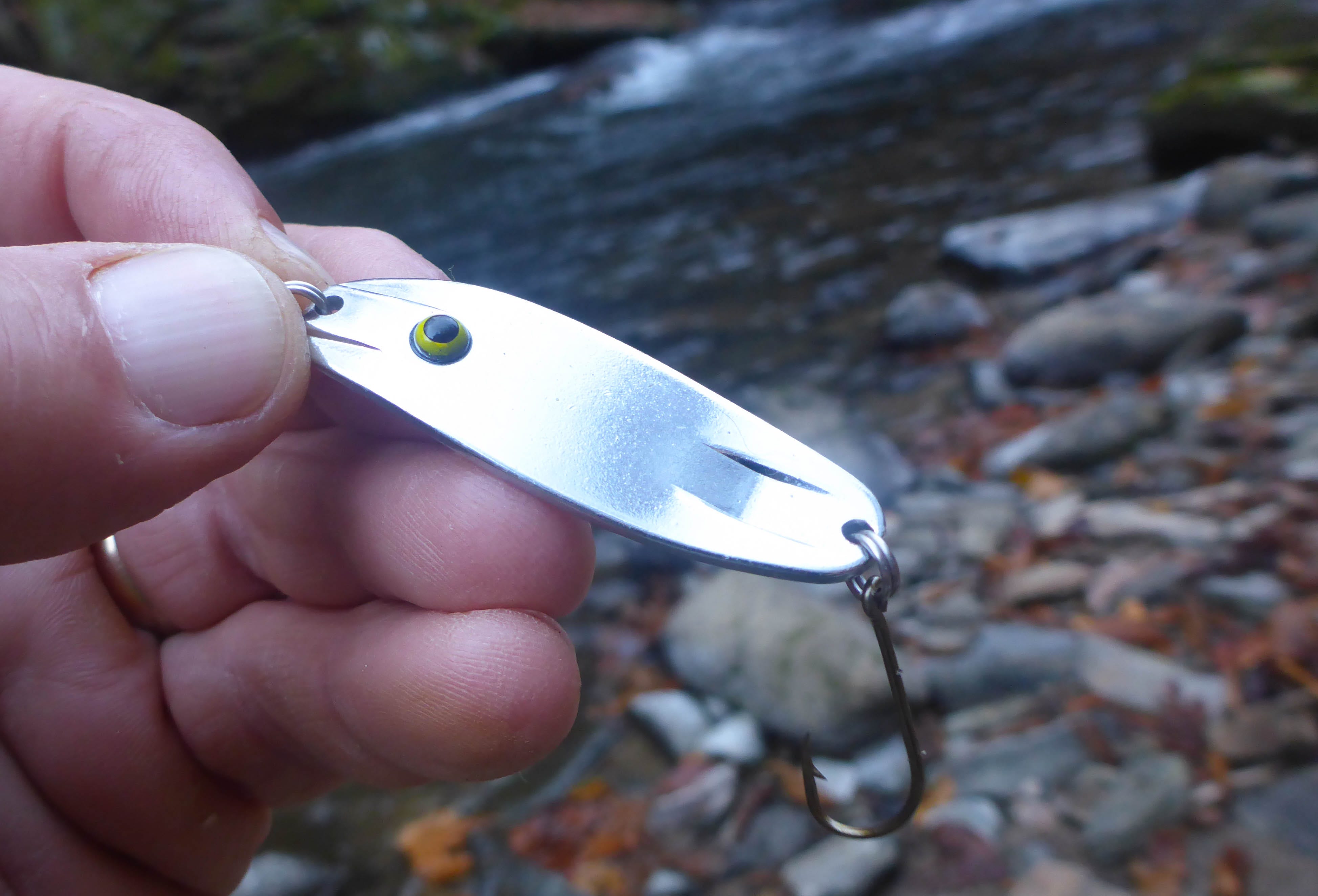

I fish a lot of special regulations waters, where only single hook artificial lures may be used. Therefore, I change the hooks on a lot of my lures. I don’t like to “clip” two of three points from a stock treble, because typically that leaves a little less hook than I want to use. Instead, I remove the treble hook from the split ring and replace it with a bait hook that is a bit larger than the treble hook. This configuration works well for landing fish, and it makes fish easier to handle when I’m unhooking them.
Stealth Tips to Help You Catch More Trout
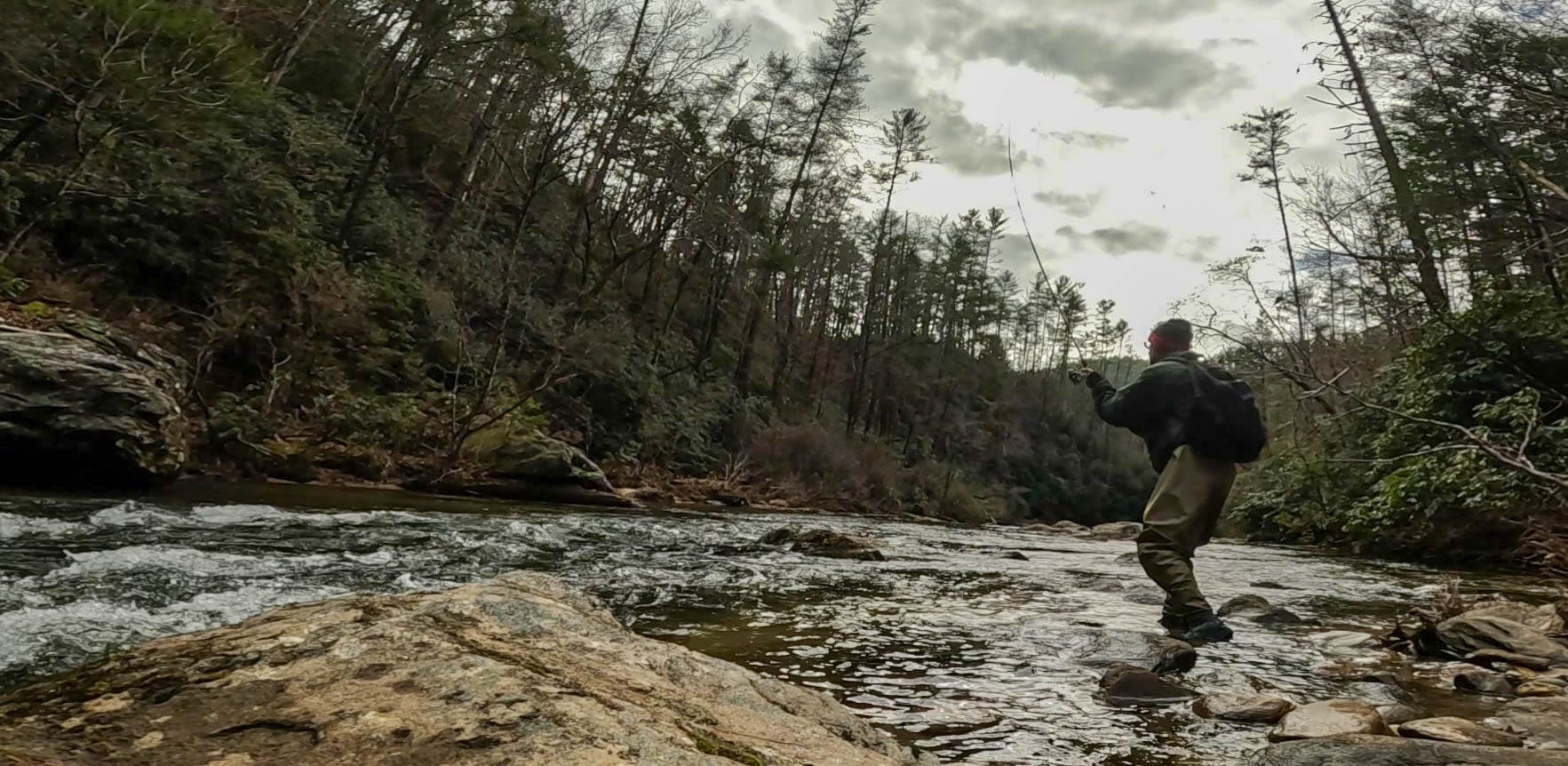

- Stay back from runs. If you don’t need to wade a section to fish it effectively, don’t.
- Cast sidearm, when possible, and feather landings to minimize splash.
- Use boulders, high banks and other stream cover to break your profile.
- Stay low and minimize abrupt movements.
- Don’t assume a shallow run won’t hold fish. Work it from a distance before you walk too close.



